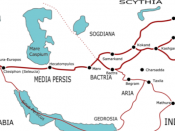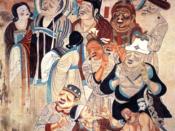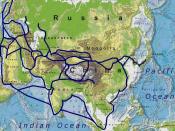The Silk Road (100 BC - 500 CE)
Silk is one of the most ancient commodities that was traded along the Silk Road, and is still used in most every part of the world. The Silk Road carried very significant products that most humans in the present day cannot live without. This combination of trade routes connected cultures and highlighted ways in which the many cultures of Europe and Asia were brought closer together through creative commercial and cultural exchanges that still continue today.
The Silk Road was not jus one route but many routes, roads, and paths that headed in an east-west direction. Some routes were well developed and relatively free from bandits, while others were less protected and had fewer towns that offered shelter from the elements. All these roads, routes, and paths met at one point in a city known as Kashgar. For this motive, the city became one of the most important trade centers in Central Asia.
Silk was not the only product traded along the Silk Road. Although silk was most remarkable for westerners, it was only one of the many items that were traded throughout the history of the Silk Road. Gold, precious metals, ivory, precious stones, and glass went towards China; while firs, gunpowder, jade, bronze objects, lacquers, and iron went west. Food was also one of the innovations that traveled along the Silk Road. Inventing new implements for growing crops, farmers of one region wanted to introduce these crop tools to farmers in far away places that might have no knowledge whatsoever of these innovations. Accordingly, they traveled throughout the regions, sharing these ideas with others and implementing theirs in return. Thus, food was being traded all over the world, and the route being taken was the Silk Road.
Religion, however, was...


